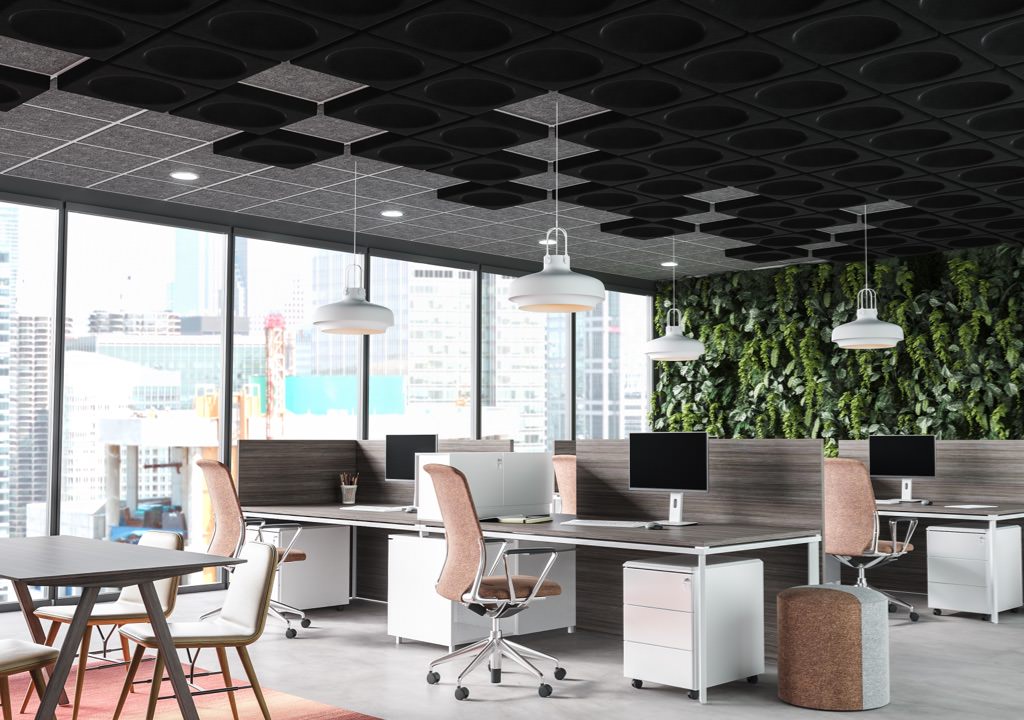The Power of Noise: Transforming Areas with Acoustic Solutions
The Power of Noise: Transforming Areas with Acoustic Solutions
Blog Article
Achieve Perfect Consistency in your house With Efficient Soundproofing Methods for Ideal Acoustics
Soundproofing plays a vital role in attaining optimal acoustics, affecting the means we experience and communicate with our living rooms. By understanding the principles of soundproofing, identifying sources of sound disturbances, choosing ideal materials, and using tried and tested techniques, you can change your home right into a haven of harmony where audio enhances instead than interferes with.

Comprehending Soundproofing Fundamentals
What are the essential principles that underlie effective soundproofing techniques? Soundproofing is rooted in the understanding of how acoustic waves traveling and connect with various materials. The key to successful soundproofing depends on interfering with or soaking up these acoustic waves to reduce their transmission from one space to another. This can be attained via different methods, such as adding mass to walls, floorings, and ceilings, sealing gaps and cracks to protect against audio leakage, and using sound-absorbing products like acoustic panels or rugs (acoustic solutions).
Recognizing the idea of sound transmission course (STC) scores is important in selecting the appropriate products for soundproofing. The STC rating gauges just how well a material can minimize airborne audio transmission via it, with higher STC ratings showing far better soundproofing capabilities. Furthermore, taking into consideration the impact of effect insulation class (IIC) scores for lowering impact noise, such as steps or furnishings moving, can further boost the effectiveness of soundproofing options.
Evaluating Sound Sources in Your Home
Structure upon the foundational understanding of soundproofing concepts, a vital action in effective sound reduction within your home involves recognizing and assessing the different resources of unwanted noise. Sound resources can be categorized into two primary kinds: airborne noise, which includes seem like discussions, songs, and television, and effect sound, such as footprints or items being gone down. To evaluate these sources, consider the different spaces in your home and the activities that generally happen in each. The living area might have extra air-borne noise from entertainment systems, while impact noise from steps may be an issue in areas with difficult flooring like hallways or kitchen areas.
Furthermore, think about external sources of sound, such as website traffic, next-door neighbors, or close-by building, which can also affect the acoustics within your home. acoustic solutions. Determining these sources will certainly aid you focus on areas for soundproofing and choose one of the most reliable options. By pinpointing the specific sound sources in your home, you can customize your soundproofing efforts to achieve optimum outcomes and create an extra relaxed and harmonious living environment
Picking the Right Soundproofing Materials
When choosing soundproofing products for your home, it is necessary to focus her comment is here on effectiveness and compatibility with your certain sound concerns. Think about variables such as the kind of noise you are attempting to obstruct, the level of soundproofing needed, and the appearances of the materials to ensure they mix flawlessly into your living area.
One typical product for soundproofing is acoustic foam. One more choice is mass-loaded plastic, which is efficient in obstructing out low-frequency noises like web traffic or machinery noises.
Curtains and rugs made from sound-absorbing materials are also effective in dampening sound, specifically in locations with tough surface areas that trigger noise to bounce around. Remember, the key to effective soundproofing is picking the ideal products that address your particular noise concerns while boosting the total comfort and acoustics of your home.
Executing Soundproofing Techniques
To effectively execute soundproofing techniques in your house, it is critical to start by evaluating the areas that are most prone to noise seepage. Usual resources of noise can include exterior audios from web traffic, neighbors, or nearby building and construction, along with inner resources like home appliances, pipes, and home entertainment systems. Once you have actually determined these areas, you can start implementing soundproofing remedies customized to every specific area.

For more considerable sound decrease, take into consideration mounting soundproof drywall, double-glazed home windows, or resistant networks to separate resonances. In addition, rearranging furnishings, including shelfs, or including sound-absorbing products can better boost the acoustics of an area. By purposefully applying these official statement soundproofing strategies, you can develop a quieter and even more relaxed living setting in your house.
Preserving and Improving Acoustic Atmosphere
After executing soundproofing techniques to address noise seepage in your house, the emphasis moves towards keeping and boosting the acoustic atmosphere to make sure a constantly serene space. To maintain optimum acoustics, routinely inspect soundproofing products for deterioration, ensuring they continue to be reliable in blocking unwanted sound. Keep doors and windows effectively secured to stop audio leak and consider including weather condition stripping or door moves for extra soundproofing.
Improving the acoustic environment can entail tactical Learn More Here placement of furnishings, carpets, and drapes to moisten audio reflections and mirrors. Using sound-absorbing materials such as acoustic panels or foam can better improve the total sound top quality in your home. acoustic solutions. Additionally, integrating soft furnishings like pillows and blankets can help in reducing sound reverberation, producing a more pleasurable auditory experience
Moreover, buying sound-absorbing design elements like bookshelves, tapestries, or plants can add to a balanced acoustic setting. Routinely decluttering your room can also stop audio waves from bouncing off surface areas, inevitably improving the total acoustics of your home. By consistently preserving and boosting your acoustic environment, you can produce an unified and tranquil space for on your own and your family.
Final Thought
Finally, achieving ideal consistency in your house via reliable soundproofing techniques is necessary for optimum acoustics. By understanding soundproofing fundamentals, examining sound resources, choosing the right materials, carrying out strategies, and keeping the acoustic environment, you can create a serene and satisfying living room devoid of unwanted noise disturbances. Prioritizing soundproofing efforts can considerably enhance the general lifestyle in your house.
Report this page